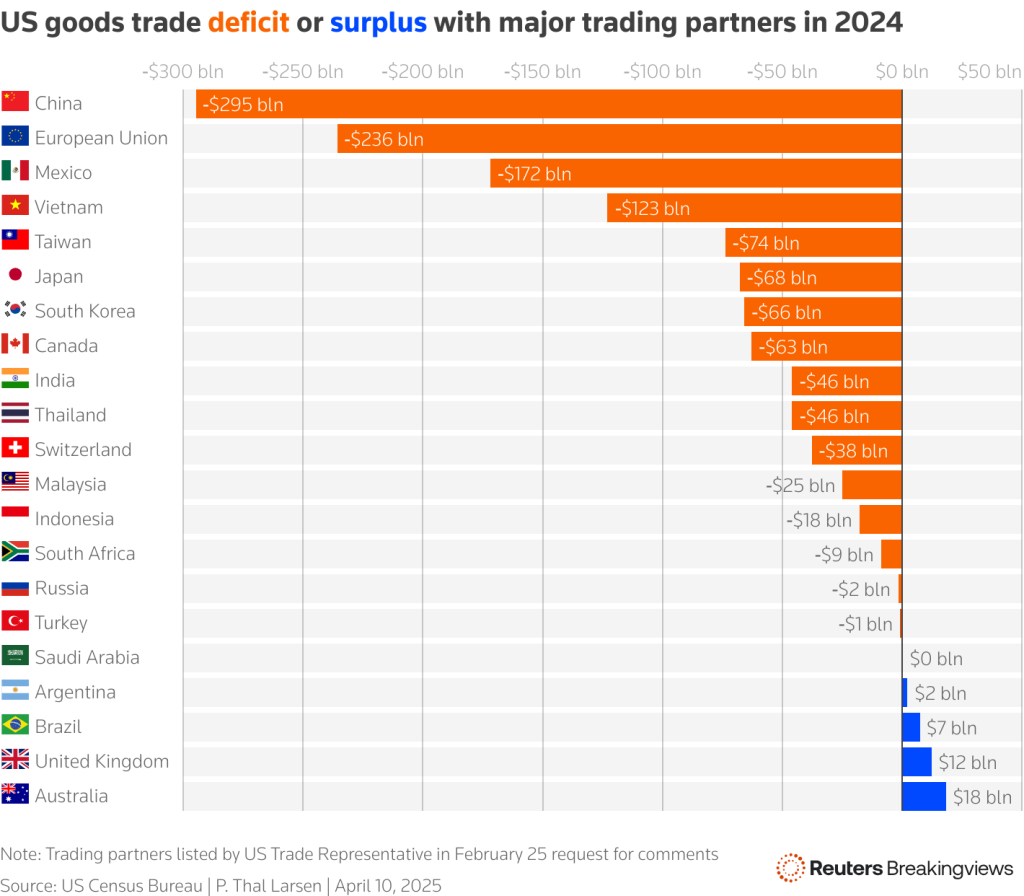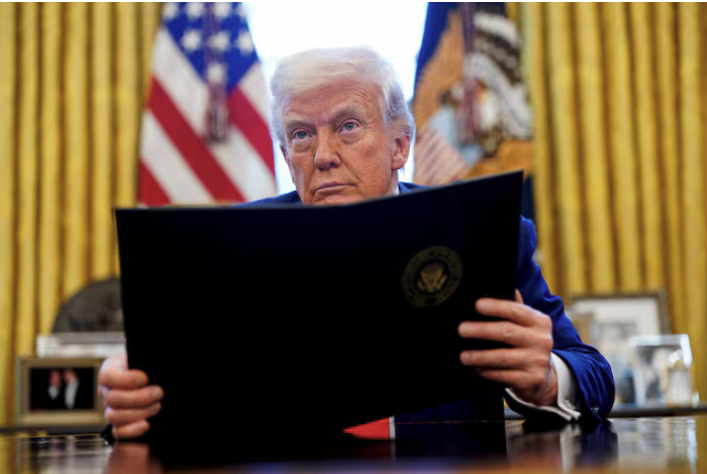In the end, Donald Trump both blinked and doubled down on tariffs. As the U.S. president announced a 90-day pause on “reciprocal” levies for most major trading partners on Wednesday, he also raised those on China from 104% to 125%. The upshot? The world’s two largest economies remain locked in a retaliatory standoff that torches $600 billion in bilateral trade and could yet spiral out of control.
Prior to the latest hikes, Goldman Sachs analysts had forecast that 104% tariffs would lop 2.4 percentage points off China’s GDP growth, implying Beijing would achieve barely half its headline goal for economic expansion this year. Higher U.S. tariffs, the bank argued, would do diminishing damage, with the maximum hit topping out at 2.9 percentage points.
Trump’s delay to tariffs on other countries provides a reprieve to the People’s Republic as well because it allows Chinese intermediate goods and transhipments to continue flowing to the U.S. via third countries like Vietnam. Meanwhile, Hong Kong has imposed no levies on American goods, leaving a sizeable loophole through which imports can continue flowing to the mainland at pre-Trump prices.

It creates some breathing room but there are signs that further escalation could see the two countries weaponise their interconnected financial systems. When asked by Fox News on Wednesday about possibly delisting of Chinese companies from Wall Street, Treasury secretary Scott Bessent said that “Everything is on the table”.
On the China side, market access remains vital to America’s most valuable companies. Last year Greater China accounted for 17% of Apple’s (AAPL.O), opens new tab worldwide sales and the People’s Republic for 21% of Tesla’s (TSLA.O), opens new tab revenue. Meanwhile fears that China might dump some of its $760 billion holdings of U.S. Treasuries exacerbated bond market anxiety this week.
Yet for all the bluster and fear, a white paper released by China’s State Council Information Office on the same day as Trump’s U-turn emphasized the benefits of bilateral trade. It concluded with a call to address both sides’ concerns “through equal-footed dialogue and consultation”. Talks could begin with something as small as sorting out the ownership of social media platform TikTok or rolling back the latest round of tariff hikes.
As a first step, someone needs to extend an olive branch. Trump’s team says, opens new tab he is waiting for a call from China’s President Xi Jinping. While direct outreach from Chinese leaders is quite rare, and Beijing didn’t start this fight, it has an opportunity to defuse a dangerous situation.
Donald Trump on April 9 announced a 90-day pause in tariffs of more than 10% for countries willing to negotiate, however the U.S. president also raised “reciprocal” levies on Chinese exports from 104% to 125%.
The hike to tariffs on China came after Beijing earlier on Wednesday announced it would levy an additional 50% tariff on American goods, taking total new tariffs on U.S. exports this year to at least 84%.
Separately, the State Council Information Office released a white paper on the trade conflict that, while critical of the U.S., emphasised the benefits of bilateral trade and ended with a call to address both sides’ concerns “through equal-footed dialogue and consultation”.
Source and credit: https://www.reuters.com/breakingviews/us-china-trade-clash-risks-all-out-financial-war-2025-04-10/





